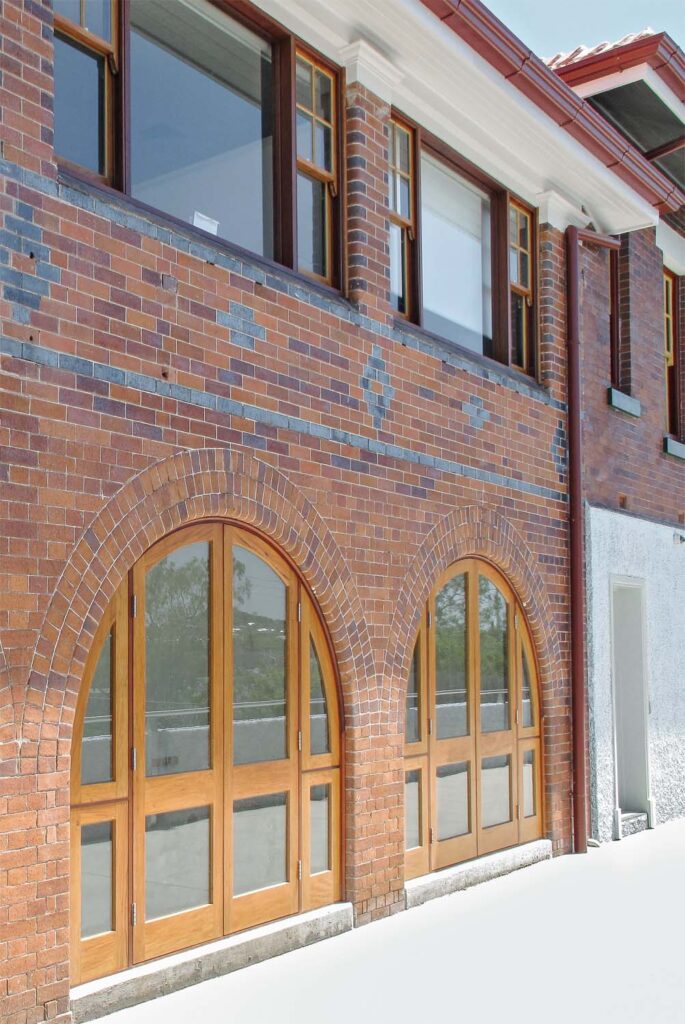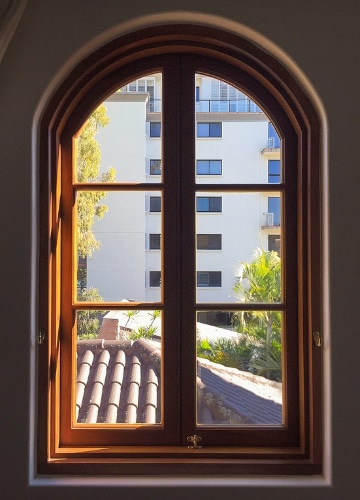Top 10 Tips for Saving Energy at Home with Better Window Choices

Embracing energy efficiency in your residential or commercial property goes beyond merely curbing energy costs; it’s a substantial step towards mitigating your carbon footprint and fostering sustainability. Making smart choices about your windows is central to this endeavour.
Here at ALLKIND Joinery, our interior living spaces are not simply areas for daily activities; they are a reflection of our dedication to environmental preservation. By selecting eco-friendly timber windows and using sustainable materials sourced from Forest Stewardship Council-certified forests, we are actively championing sustainability. We delve into fundamental considerations such as the positioning and orientation of windows, the significance of solid timber as a window frame material, and the critical necessity of proper window maintenance. Each of these components contributes to a property that isn’t only energy-efficient, but also mindful of its environmental impact.
In this comprehensive guide, we provide ten invaluable tips to empower you, as a property owner in SE Queensland, to comprehend the role of energy efficiency in your window design. This equips you to make educated decisions about the aspects of products we here at ALLKIND Joinery offer; window types and frame materials, how to integrate effective ventilation and window treatments, how to wisely invest in advanced window technologies, and the ways in which you must comply with local building regulations and energy codes.
Now that we have set the stage, let’s delve deeper into understanding the nuances of energy efficiency in window design, starting with the importance of choosing the right type of window.

1. Understanding Energy Efficiency in Window Design
In our efforts to conserve energy and curb carbon emissions, we place considerable importance on energy efficiency in window design, centring our attention on principles like heat flow and insulation. The ideal window for our Queensland climate is one that effectively blocks undesirable heat gain in summer while inhibiting heat loss in winter, thereby bolstering a property’s overall energy efficiency.
Conversely, we understand that inadequately insulated windows may let energy slip away, leading to a rise in energy expenses. We find that our energy efficiency efforts are enhanced by using eco-friendly materials such as solid timber for window frames, given that timber is naturally renewable and has impressive insulating capabilities.
2. Choosing the Right Type of Energy Efficient Window
We recognise that different window types can substantially impact the energy efficiency of both residential and commercial properties. That’s why we make a variety of windows types, such as double-hung, casement, and sliding windows. Each of these styles has unique energy performance characteristics; for example, casement windows provide a tight seal when closed and offer superior resistance to air leakage, whilst sliding windows offer commendable energy efficiency when constructed and installed correctly, despite not being as airtight.
3. The Importance of Window Frame Material
In our experience, the choice of material for window frames plays a significant role in determining a property’s energy efficiency. Among various frame materials, we hold solid timber in high regard due to its natural insulating properties, which can mitigate energy loss and contribute to reduced carbon emissions. When we opt for Forest Stewardship Council-certified timber, sourced from sustainable forests, we are also advocating for responsible harvesting that decreases overall carbon dioxide emissions and lessens environmental impact.
4. Incorporating Ventilation in Window Design
We believe that appropriate ventilation is crucial when designing energy-efficient windows. Well-constructed windows can facilitate natural airflow, thus diminishing the need for energy-intensive artificial cooling systems, resulting in a reduction of energy costs.
We’ve also found that strategic window placement, such as positioning windows on opposite walls for cross-ventilation, can optimise the flow of fresh air and augments energy efficiency.
5. The Advantages of Investing in Double-Glazed Windows
Double-glazed windows, which integrate two glass layers with an intermediate space, offer insulation superior to that of single-glazed variants. We’ve noted how this upgrade can enhance energy efficiency and can significantly cut down energy costs over time.
6. Appreciating the Impact of Window Treatments
In our approach to insulation and energy conservation, we recognise the significant role that window treatments, including blinds, curtains, and shutters, play in a property. Despite their primary functions revolving around privacy and light regulation, we’ve observed that these treatments can assist in decreasing unwanted heat gain in summer and heat loss in winter. For instance, we’ve found thermal blinds or curtains can act as an additional layer of insulation, thereby diminishing energy loss through windows.
7. The Significance of Window Orientation and Placement
The orientation and positioning of windows play an integral role in optimising natural light, thereby reducing dependence on artificial lighting and enhancing energy efficiency. North or north-east facing windows capture the morning sun, delivering natural heat and light. Conversely, windows facing the west can cause increased heat in the afternoon and should ideally be smaller or fitted with shading devices.
Considering the sun’s trajectory, while recognising its seasonal changes, is critical in our approach to window placement. As part of our comprehensive sustainable design method, this strategy aids in lowering energy consumption, especially when paired with other sustainable materials.
8. Incorporating Advanced Energy Saving Window Technologies
Our application of advanced window technologies, such as low-emissivity (Low-E) glass coatings and gas fills, has led us to observe a significant boost in energy efficiency.
In our experience, we’ve noticed that Low-E coatings have the ability to reflect infrared light. This feature helps to ensure that properties remain warm during winter as it reflects the interior heat back inside. During summer, these coatings function to keep properties cool by reflecting the external heat back outside. Similarly, our experiences have shown that the introduction of gas fills between glass panes adds an extra layer of insulation, thereby further reducing the flow of heat.
When these advanced technologies are paired with solid timber frames, they form a high-performing, energy-efficient solution that contributes to reducing carbon emissions.
9. The Importance of Regular Window Maintenance
Our approach to enduring energy efficiency of windows necessitates routine maintenance and inspection.
We’ve noticed that over time, weather stripping and caulking can deteriorate, leading to air leaks and increased energy usage. Therefore, it is crucial for us to examine these elements annually and replace them as needed to maintain optimal insulation.
Similarly, we believe that the condition of solid timber frames should be periodically assessed and serviced, ensuring they remain in prime condition to continue contributing to energy efficiency.
10. The Role of Local Building Regulations and Energy Codes
In SE Queensland, local building regulations and energy codes play an essential role in promoting energy efficiency. These regulations establish benchmarks for the thermal performance of windows, measured in terms of U-value (heat transfer) and Solar Heat Gain Coefficient (SHGC).
Our compliance with these codes not only ensures environmental responsibility of residential and commercial properties but also encourages the use of sustainable materials such as Forest Stewardship Council-certified timber. Thus, understanding and following these codes, in our experience, can lead to better energy savings and a minimised carbon footprint.

Revamp your Interior Living Spaces with Energy Saving Windows Today
It’s clear that energy efficiency is a multifaceted concept, extending beyond just reducing power usage. It demands careful consideration of window design, materials, maintenance, along with an understanding and observance of local energy codes. When combined, these strategies lead to considerable savings on energy bills and a significant reduction in your carbon footprint. Moreover, using sustainable materials from forest-certified sources for your windows encourages a sustainable lifestyle, promotes renewable resources, and supports responsible forestry.
As we all progress towards a more sustainable way of living, it’s important to remember that every choice matters, and ALLKIND Joinery is here to support you. Our expert team can guide you in choosing top-quality, eco-friendly timber windows, which not only enrich the aesthetics of your residential or commercial properties but also contribute to energy efficiency.
Let’s work together to create interior living spaces that exemplify our commitment to a sustainable future. Choose ALLKIND Joinery for help with curating a property that truly respects the environment.

